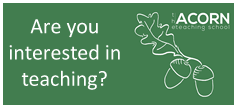Nursery News – 1st February 2021
NURSERY NEWS
1st February 2021 – Edition 214
Find out About:
A: .Covid updates. Planning for The Summer Term April To July 2021
B. Mrs McGrath is expecting a baby!
C. Parent Consultations for: Green, Red and Yellow Group- Main Nursery, AND Blue Group (our January 2021 Intake). (via telephone).
D. Willow Nursery School Phonics Programme. Starts this week!
A: Covid updates.Planning for The Summer Term April To July 2021
A number of our families are choosing to keep their nursery children at home at this time due to the pandemic. All families have different situations. Some families are choosing to stay at home, to avoid mixing. Other families are home schooling older children and it is just not practical to do a school run for a nursery pupil when an older sibling is having a zoom lesson.
Some families are choosing to be at home until the wider reopening of schools. At first we believed this may have happened by the 22nd of February, but we now know this will not be the case. The earliest date for the wider reopening of schools will be the 8th of March. This may effect when our pupils choosing to be at home will return.
Impact on children who have free funded hours.-(Main Nursery Children and Blue group)
The Government understands that whilst we are open, not all parents are choosing to attend. We receive funding for all the children registered with us. So from a financial point of view we receive funding payments for individual children regardless of whether your child is attending or not at the moment.
Impact on our Two Year Olds who pay to attend:
As I have said in the past, this Spring Term will be unique. I will waiver fees for children not attending in Catkins Class due to parental choice, for this term only. Just before term started in January, the announcement came that the majority of schools would be closed to all but Keyworker and vulnerable children. Our parents had to make a very quick decision about how they wanted to proceed at Nursery. I did not want parents feeling pressured into their child having to attend Nursery because they had to pay for their child’s space.
Some time has passed now, but we are, as a community, still not sure when our local schools will reopen. I need to be practical, as the Catkins fees directly pay for the Catkins Staff. In this financial year we have lost £16,000 from Catkins Income.
We can afford this loss of income from this financial year, but this situation is not sustainable going forward into the next financial year.
I now need to think about, and make plans for the Summer Term, and indeed the new school year from September. From April, all spaces must be paid for whether your child attends nursery or not. The only exceptions will be if we close the school, or if your family is self isolating at home for 10 days due to a contact with an infected person, or a household member having covid.
However, I understand that some families will not be ready to send their children back to nursery. I have some suggestions for those families with children enrolled in Catkins class but currently choosing to keep their two year old children at home. Please consider the following options:
From April:
1) You can choose to withdraw your child from Catkins, so that they have no spaces booked. We could then contact you when your child is due to start free funded 15 or 30 hours, in the term after they turn three.
You could choose to re-enrol in Catkins at the beginning of a term in the future. School terms begin in September, January and April.
2) You can keep your current sessions in Catkins, but you will be expected to pay for all booked sessions from April throughout the Summer term.
3) You can choose to reduce the number of booked sessions in Catkins class. We would allow you to drop any number of sessions, even down to just one session per week. The session(s) booked would be regular booked sessions every week, and we would expect you to pay for these sessions from April throughout the summer term.
I will be contacting Catkins families, choosing to be at home at the moment, in the coming week, to ask what they plan to do from April onwards, and try to find a positive solution for all those involved.
B. Mrs McGrath is expecting a baby!
I have some lovely news to share, Mrs McGrath is going to have a baby at the end of May 2021. Mrs McGrath was planning to work right up to when the baby is due. However, the government guidelines ‘Action for early years and childcare providers during the coronavirus outbreak.’ added further advice for pregnant staff in its January update. They advise that childcare workers who are pregnant move into the ‘Extremely Clinically Vulnerable’ category once they enter their third trimester of pregnancy (28 weeks) and so should work from home when they reach this point. So,Mrs Mc Grath will not be in school, and working from home from Friday 5th March 2021. In the meantime, we are trying to reduce her contacts as much as possible, so I am asking her to distance herself from parents at drop off and collection. You may pass on messages to her, via the other Catkins staff, or choose to communicate information by email, if you have something more detailed to say.
C.Parent Consultations for: Green, Red and Yellow Group- Main Nursery, AND Blue Group January 2021 Intake. (via telephone).
Please note, these Consultations are only for those families who are currently attending nursery. If you are choosing to keep your child at home at the moment, please do not make an appointment, as this consultation is for staff to discuss progress being made in school.
All 3+ Nursery age children (this includes blue group too) will have their parent consultations during week beginning 22nd February. We offer parent consultations once a term to all children in the 3+ age group.
As parents are unable to come into school at the moment due to the covid pandemic, we are following government guidelines and offering parent consultations on the telephone. Parents will have the opportunity to have a 5 minute phone consultation with their child’s keyworker.
We ask you to telephone the school office to make an appointment for your child.
Staff with have a list of times available. You may select an available time. Staff will ask you for some details: your name, your childs name, and the phone number you would like us to call you on for the consultation.
We have only one phone line at school so the consultations will be at the following times:
Yellow Group, Speaking with Miss Howe.
Monday 22nd February 2021. Appointments available from 3:00pm to 5:00pm
Green Group, Speaking with Mrs Patterson.
Tuesday 23rd February 2021. Appointments available from 3:00pm to 5:00pm
Blue Group, Speaking with Miss Gaffney
Wednesday 24th February 2021, Appointments available from 3:00 to 5:00
Red Group, Speaking with Miss Skai
Thursday 25th February 2021. Appointments available from 3:00pm to 5:00pm
If Covid impacts upon these arrangements in any way, we will reschedule the appointments for the same time and day, but a week later.
D. Willow Nursery School Phonics Programme
Phonics at Grouptime….
(for those children who leave us in July 2021 to go to primary school )
This week, staff begin our phonics program delivering structured phonics activities at grouptimes. Children will focus on learning one new sound each week. Every Wednesday, we will send home a worksheet introducing the new sound to be practiced. We use the Jolly Phonics program. Each letter has a name, a sound and an action. The sheet we send home explains this and shows you, their parents the
action to perform. Making a movement linked to a sound helps children to recall the sound. Please encourage your child to learn the new sound and action. Have a go at writing the letter shape and colour in the picture. Keep the sheets together, perhaps in an A4 ring binder. Learn the new sound each week, but also go over all the previous sounds.
Your children are still very young, so only do this with your child at an appropriate time and not for too long.
You need to present the activity to your child as a fun task that they should look forward to doing with you. ‘Little and often’ is a good way to learn letter sounds.
Information from Miss Howe regarding our phonics program:
‘Phonics’ is one tool children can use when they are beginning to learn to read and write.
The Department for Education (DfE) has produced a phonics resource called Letters and Sounds: Principles and Practice of High Quality Phonics. This resource splits the teaching of phonics into six phases. At Willow, we work on phase 1 activities all the time. Phase 1 describes using activities such as storytelling and singing songs, rhymes, music, role play and listening games. This will give the children opportunities to listen carefully and talk extensively about what they hear, see and do. Phase 1 activities are designed to underpin and run alongside activities in other phases. Phase 2 is an introduction to more formal phonics work and involves teaching the children sets of letters in a specified order. The first set of letters to be learnt are s.a.t.i.p.n because these letters make a greater number of words than any other 6 letters in the alphabet. We feel that the children at Willow are ready to begin focussing on letter sounds in a fun and practical way.
What are we going to do?
· Each child will participate in 1 x 25 minute phonic sessions each week
· We are going to begin teaching 6 letter sounds, s.a.t.i.p.n. and will continue with one letter sound each week until the end of the summer term
· We will teach the children that all letters have a name, and that these letters make a sound. For example: the letter S makes the sound ‘sss’
· We will use a mixture of songs, games, tongue twisters, art, drama and movement activities to teach the letter sounds.
We will use ‘Jolly Phonics’ with the children. Jolly Phonics is the name of a program used to teach phonics. Each week we will:
· Tell the children a story, which includes focussing on the sound we are trying to teach.
· Teach an action to represent the sound
· Send home a picture (linked to the story) for the children to colour, and they can practise writing the letter which represents the sound.
For example: The ‘s’ story involves finding a snake which goes ‘ssss’. The action for ‘s’ involves making a snaking movement with your hand and forearm and saying ’ssss’. The picture to take home is a picture of a snake
Helping at home:
The picture your child brings home will explain to you how to make the action to represent the sound. Talk with your child about what they have learned at school. Learn the actions along with your child. Making the movement may help your child to remember. Have fun!
Phonics
What is phonics?
Phonics is the word used to describe the sounds the letters make. In simple terms, the word ‘cat’ can be read from its three sounds: c-a-t.
These are not the names of the letters as we say them in the alphabet, but the sounds these letters make. The word ‘thick’ is made up of three sounds: th-i-ck, where pairs of letters combine to make a single sound. Similarly, ‘rash’ is made up of three sounds: r-a-sh.
There are 40+ sounds in English but only 26 letters that are used to represent these sounds.
The five basic skills for reading and writing are:
• Learning the letter sounds
• Learning the letter formation
• Blending
• Identifying sounds in words
• Spelling the tricky words
When reading, children need to understand the meaning of the words. Before they can do this, they have to be able to work out what the words say. The phonic skill for this is to look at the letters, say the sounds and hear the words. This is called blending.
The main phonetic skill for writing is to start with the spoken word, then listen, identify and write the sound in that word. The ability to hear the sounds in words is called phonological awareness. For example, with the word ’bin’ if you listen you hear the sounds ‘b……i….n’. Then if you know how to write those letter sounds, you
can write the word ‘bin’ without help. This is the opposite to the skill needed for blending.
The letters for the 42 Sounds of English
a ……ant, sand, caravan
ai……aim, aid, drain, (long a)
b……bat, bend, crab
c ……cat, cot, duck
d……dog, dip, sudden
e……egg, end, shed
ee……eel, creep, tree (long e)
f……fog, lift, fluff
g……goat, gap, digger
h……hop, hit, hill
i……ink, indian, drink
ie……pie, tie, die (long i)
j……jelly, jet, jumper
k……king, kind, kettle
l……leg, lost, shell
m……man, mill, shrimp
n……nut, nip, spin
o……orange, on, spot
oa……oak, oats, boat (long o)
p…….pig, pet, step
q……queen, quick, quin
r……run, rabbit, barrel
s…..sand, sun, twist
t……top, tug, mat
u…….up, under, lung
ue……due, Tuesday, cue
v……van, vet, give
w…..wind, went, swim
x…..x-ray, ox, flex
y……yell, yes, yellow
z……zoo, zebra, buzz
sh……ship, shop, wish
ch……chop, chick, much
th……this, then, with (voiced th)
th……thin, thick, thimble (unvoiced th)
ng……song, bang, string
oo……look, room, foot (little oo)
oo……moon, spoon, shoot (long oo)
ar……art, arm, start
er……kerb, stern, sister
or……order, corn, storm
oi……oil, ointment, spoil
ou……out, cloud,



